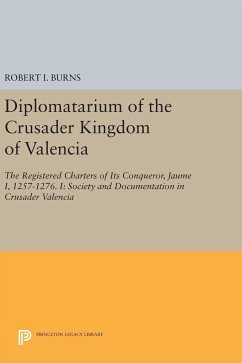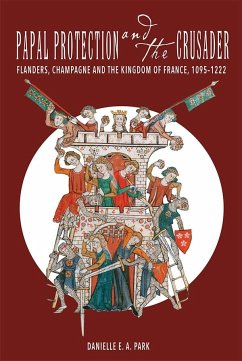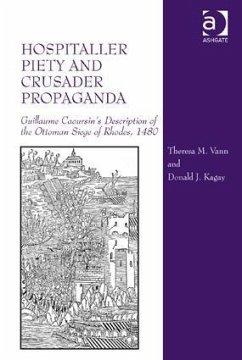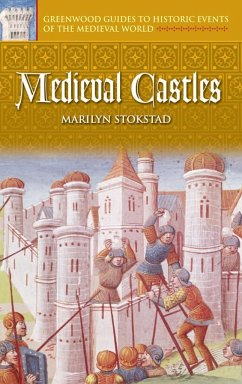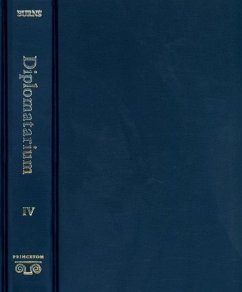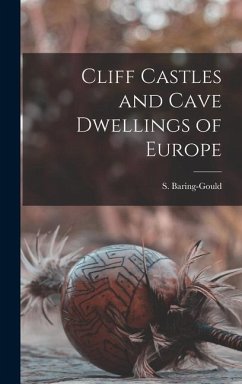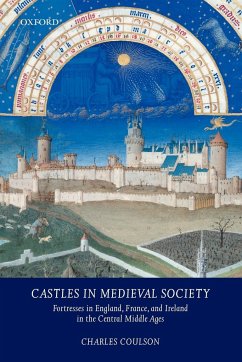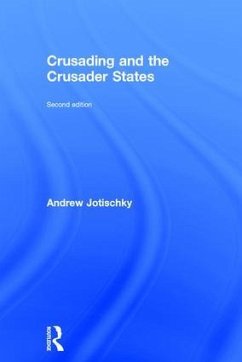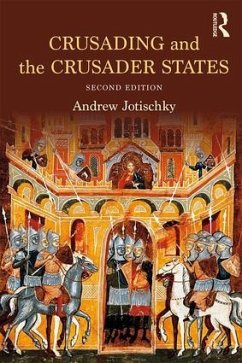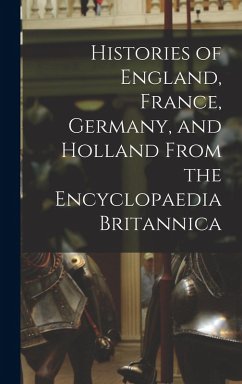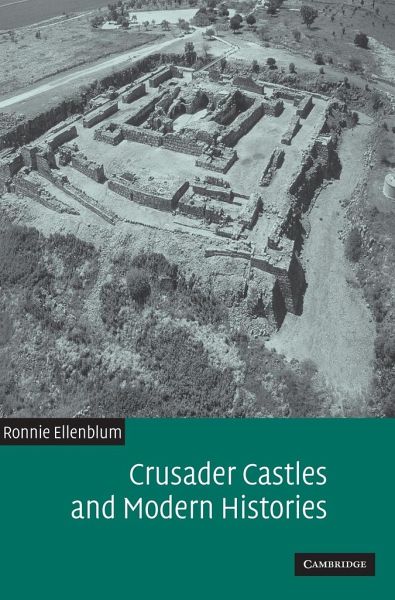
Crusader Castles and Modern Histories
Versandkostenfrei!
Versandfertig in 1-2 Wochen
84,99 €
inkl. MwSt.
Weitere Ausgaben:

PAYBACK Punkte
42 °P sammeln!
Revisionist study that unpacks the modern historiography of the Crusades and reinterprets Crusader military architecture.For the last 150 years the historiography of the Crusades has been dominated by nationalist and colonialist discourses in Europe and the Levant. These modern histories have interpreted the Crusades in terms of dichotomous camps, Frankish and Muslim. In this revisionist study, Ronnie Ellenblum presents an interpretation of Crusader historiography that instead defines military and architectural relations between the Franks, local Christians, Muslims and Turks in terms of conti...
Revisionist study that unpacks the modern historiography of the Crusades and reinterprets Crusader military architecture.
For the last 150 years the historiography of the Crusades has been dominated by nationalist and colonialist discourses in Europe and the Levant. These modern histories have interpreted the Crusades in terms of dichotomous camps, Frankish and Muslim. In this revisionist study, Ronnie Ellenblum presents an interpretation of Crusader historiography that instead defines military and architectural relations between the Franks, local Christians, Muslims and Turks in terms of continuous dialogue and mutual influence. Through close analysis of siege tactics, defensive strategies and the structure and distribution of Crusader castles, Ellenblum relates patterns of crusader settlement to their environment and demonstrates the influence of opposing cultures on tactics and fortifications. He argues that fortifications were often built according to economic and geographic considerations rather than for strategic reasons or to protect illusory 'frontiers', and that Crusader castles are the most evident expression of a cultural dialogue between east and west.
Review quote:
'A significant work of scholarship (?)0; bold and innovative, extremely well-written (?)0; At heart, Ellenblum has written a study which is a new historical perspective on the crusading era.' Professor Jill Claster, New York University
Table of contents:
Part I. National Discourse and the Study of the Crusades: 1. From moral failure to a source of pride; 2. The narrative of the Crusades and the nationalist discourse; 3. Nationalist discourse and Crusader archaeology; Part II. Crusader Studies Between Colonialist and Post-Colonialist Discourse: 4. Colonial and anti-colonial interpretations; 5. Who invented the concentric castles?; 6. 'Crusader cities,' 'Muslim cities,' and the post-Colonial debate; 7. Crusader castle and Crusader city: is it possible to differentiate between the two?; Part III. Geography of Fear and the Spatial Distribution of Frankish Castles: 8. Borders and their defence; 9. Borders, frontiers, and centres; 10. The geography of fear and the creation of the Frankish Frontier; 11. The distribution of Frankish Castles during the twelfth century; Part IV. The Castle as Dialogue Between Siege Tactics and Defence Strategy: 12. Siege and defence of castles during the First Crusade; 13. Frankish siege tactics; 14. Development of Muslim siege tactics; 15. Sieges of the 1160s and 1170s and the appearance of the concentric castles; 16. The construction of a frontier castle: the case of Vadum Iacob; 17. The last years of the Latin kingdom: a new balance of power; Conclusion.
For the last 150 years the historiography of the Crusades has been dominated by nationalist and colonialist discourses in Europe and the Levant. These modern histories have interpreted the Crusades in terms of dichotomous camps, Frankish and Muslim. In this revisionist study, Ronnie Ellenblum presents an interpretation of Crusader historiography that instead defines military and architectural relations between the Franks, local Christians, Muslims and Turks in terms of continuous dialogue and mutual influence. Through close analysis of siege tactics, defensive strategies and the structure and distribution of Crusader castles, Ellenblum relates patterns of crusader settlement to their environment and demonstrates the influence of opposing cultures on tactics and fortifications. He argues that fortifications were often built according to economic and geographic considerations rather than for strategic reasons or to protect illusory 'frontiers', and that Crusader castles are the most evident expression of a cultural dialogue between east and west.
Review quote:
'A significant work of scholarship (?)0; bold and innovative, extremely well-written (?)0; At heart, Ellenblum has written a study which is a new historical perspective on the crusading era.' Professor Jill Claster, New York University
Table of contents:
Part I. National Discourse and the Study of the Crusades: 1. From moral failure to a source of pride; 2. The narrative of the Crusades and the nationalist discourse; 3. Nationalist discourse and Crusader archaeology; Part II. Crusader Studies Between Colonialist and Post-Colonialist Discourse: 4. Colonial and anti-colonial interpretations; 5. Who invented the concentric castles?; 6. 'Crusader cities,' 'Muslim cities,' and the post-Colonial debate; 7. Crusader castle and Crusader city: is it possible to differentiate between the two?; Part III. Geography of Fear and the Spatial Distribution of Frankish Castles: 8. Borders and their defence; 9. Borders, frontiers, and centres; 10. The geography of fear and the creation of the Frankish Frontier; 11. The distribution of Frankish Castles during the twelfth century; Part IV. The Castle as Dialogue Between Siege Tactics and Defence Strategy: 12. Siege and defence of castles during the First Crusade; 13. Frankish siege tactics; 14. Development of Muslim siege tactics; 15. Sieges of the 1160s and 1170s and the appearance of the concentric castles; 16. The construction of a frontier castle: the case of Vadum Iacob; 17. The last years of the Latin kingdom: a new balance of power; Conclusion.





